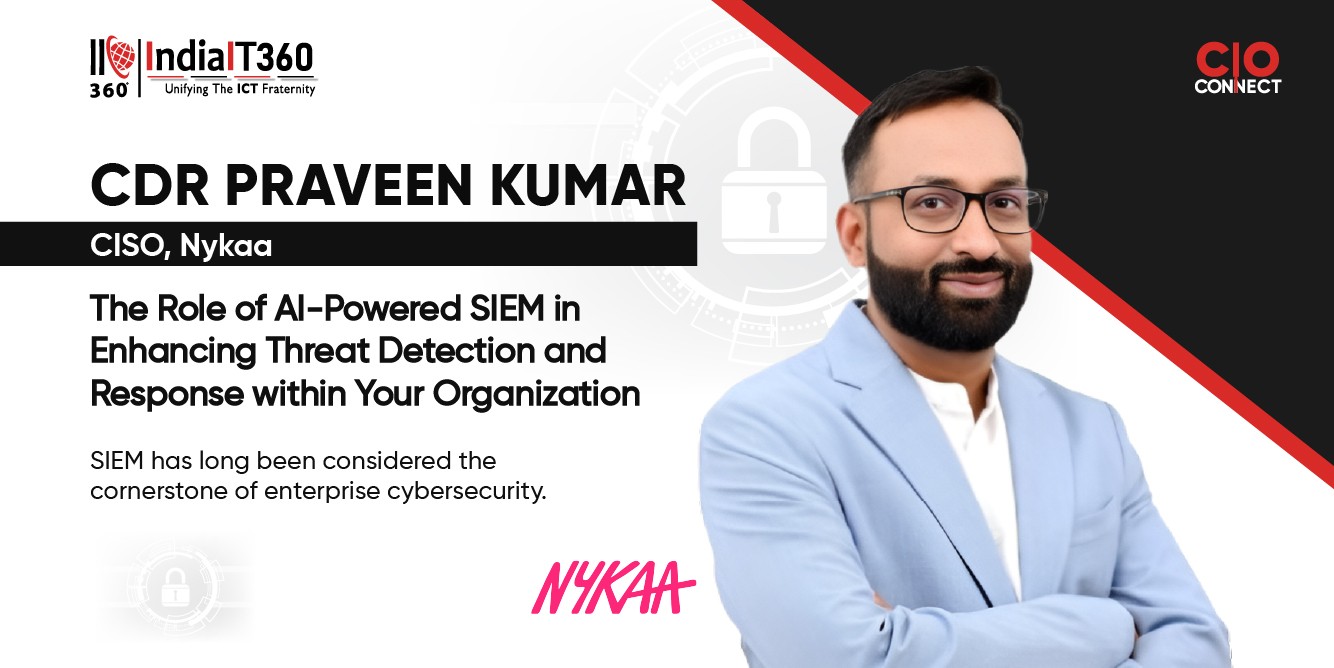Sun, Dec 14th 2025
The Role of AI-Powered SIEM in Enhancing Threat Detection and Response within Your Organization
What is SIEM and Why It Matters Today?
SIEM has long been considered the cornerstone of enterprise cybersecurity. With today’s threat landscape becoming more aggressive, more intelligent, and more persistent, having a system that centralizes visibility and supports incident response is not just helpful—it’s vital.SIEM was developed to collect, analyze, and correlate logs across an organization’s digital footprint—network devices, endpoints, servers, and cloud infrastructure. But while SIEM solutions promised enhanced visibility and faster response, the reality has often been different. Many organizations have found themselves overwhelmed by noise, plagued by false positives, and limited by static rule sets that fail to adapt to evolving threats.
As businesses adopt hybrid and cloud-native environments, the gap between what traditional SIEM was meant to do and what it actually delivers has grown significantly. Simply put, legacy SIEM has not kept up with the pace or complexity of modern cyber threats.
SIEM's Evolution: From Promise to Pressure
Over the past decade, SIEM has gone through several iterations. Early solutions were compliance-focused and manually intensive. They helped gather logs and fulfill audit requirements but offered limited proactive defense.The evolution we expected—a SIEM that could dynamically detect, prioritize, and even respond to threats—largely did not materialize at the level needed. Instead, organizations encountered scalability issues, alert fatigue, and operational complexity.
Today, AI-powered SIEM is being introduced not as a final solution, but as an incremental layer of intelligence built on traditional frameworks. The majority of current SIEM solutions incorporate natural language processing (NLP), machine learning (ML), and behavior analytics. These additions help make sense of large datasets and offer contextual analysis that was previously missing—but it's important to acknowledge that this is still an evolving capability, not a finished product.
What AI-SIEM Adds to the Picture
While AI-SIEM offers several advantages, it is not a magic wand. It enhances traditional SIEM by making it more adaptive and predictive—but only as strong as the data and configurations it's built on.Here’s how AI-SIEM is currently reshaping the space:
- Contextual Understanding (via NLP): Adds natural language processing to improve alert interpretation, threat hunting, and query generation.
- Behavior-Based Learning: Goes beyond static rules by analyzing user and entity behavior to flag anomalies.
- Prioritized Alerts: Helps reduce false positives but still requires fine-tuning to be effective.
- Automated Responses: Supports policy-driven automation to reduce dwell time, but human oversight remains critical.
- Hybrid Scalability: Better manages cloud, on-prem, and hybrid environments, yet integration challenges remain across varied tech stacks.
 Advertisement
AdvertisementHow Does AI-SIEM Work—And What It Still Can’t Do Alone
Think of AI-SIEM as an intelligence layer stitched into your existing SIEM infrastructure. It doesn’t reinvent the wheel—it helps it roll a bit more smoothly.Here’s how it functions today:
- Ingest & Normalize
Collects telemetry from diverse sources and normalizes it to a common format. While helpful, much of this step still relies on traditional SIEM plumbing. - Correlate & Detect Patterns
Uses AI to correlate events and spot hard-to-detect attacks. But detection quality still depends on the data’s accuracy, completeness, and contextual richness. - Apply AI/ML Models
Trains on behavior and traffic patterns to detect outliers. However, models require constant tuning and can struggle with truly novel attack types. - Risk Scoring
Helps prioritize based on contextual severity, but doesn’t eliminate the need for analyst review. - Automate Response
Enables faster actions like IP blocking or account lockdowns—but always under predefined logic, not full autonomy. - Learn & Improve
Uses feedback loops to sharpen detection over time. However, these loops are only as effective as the incidents and analyst decisions they're built on.
A Realistic Look at Business Impact
In today’s hyper-connected ecosystem, visibility into your IT infrastructure is essential—but that visibility must be intelligent and actionable. AI-SIEM represents a meaningful leap forward, but not a total transformation.Yes, it offers:
- Reduced false positives
- Prioritized alerts
- Faster, more contextual responses
- It still relies heavily on data quality, configuration, and rule tuning.
- It doesn’t eliminate the need for skilled analysts.
- It’s not immune to blind spots, especially in decentralized or siloed environments.
Takeaway: Strategic Investment, Not a Final Destination
The shift to AI-powered SIEM isn't just a technical decision—it's a strategic one. But we should be clear-eyed: this is not the endgame of cybersecurity analytics. AI is currently a powerful assistant, not an autonomous defender.To truly benefit:
- Choose platforms that blend endpoint, identity, and cloud intelligence.
- Focus on integration, not just adoption.
- Prioritize continuous feedback loops and human oversight.
Article written by Cdr Praveen Kumar, CISO @ Nykaa
Team IndiaIT360
Write With Us
IndiaIT360 is passionate about fostering community within the tech industry. IndiaIT360's commitment to staying abreast of the latest trends and advancements in the IT industry ensures that their content is not only informative but also insightful and forward-thinking. Through their writing, they aim to demystify complex technological concepts, making them accessible to a broad audience.








































